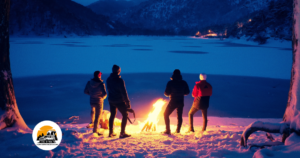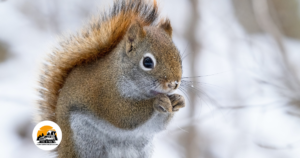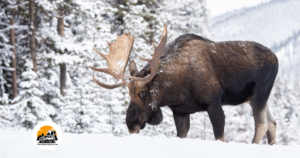Have you ever considered what it would be like to camp under a sky dusted with frost and surrounded by snow-covered trees? Winter camping can be one of the most magical experiences you can have in nature, but it also requires careful planning and the right gear. This guide will help you put together the essentials for a fun and safe winter camping experience, so you can focus on making memories rather than worrying about the cold.
Understanding Winter Camping
Winter camping offers a unique beauty unlike any other season. The serene silence and glistening landscapes are incredibly rewarding. However, it’s essential to approach this adventure with the right mindset and preparation. The cold can pose challenges, but with the right gear and techniques, you can keep warm and enjoy your winter escape.
Why Winter Camping?
Choosing to camp in the winter can provide a peaceful retreat and fewer crowds in popular areas. You can enjoy activities such as snowshoeing, cross-country skiing, or simply sitting by a crackling fire under a starry sky. The beauty of a snow-laden forest and the tranquility of winter nights can be unlike any other outdoor experience.
Essential Gear for Winter Camping
When it comes to winter camping, the right gear is crucial. Having the right equipment will keep you warm, dry, and safe throughout your adventure. Here’s a comprehensive list of essential gear you should consider:
Clothing Layers
Wearing the right clothing is your first line of defense against the cold. A layered approach is ideal, as it allows you to adjust your clothing based on activity levels and weather conditions. Here’s how to break it down:
| Layer Type | Purpose | Recommended Materials |
|---|---|---|
| Base Layer | Moisture-wicking to keep you dry and warm | Merino wool or synthetic fabrics |
| Insulation Layer | Retains body heat and provides warmth | Fleece or insulated down jackets |
| Outer Layer | Protects against wind, snow, and rain | Waterproof and breathable jackets |
Base Layer
Opt for a moisture-wicking base layer to keep sweat away from your body. Avoid cotton as it retains moisture, which can lead to chilling.
Insulation Layer
An insulating layer adds warmth and can be a thick fleece or down jacket. Insulating materials like fleece are breathable yet efficient in retaining heat.
Outer Layer
A good outer layer with waterproof characteristics protects you from snow and rain. Look for jackets with ventilation options to regulate temperature easily.
Footwear
Keeping your feet warm and dry is crucial in winter camping. Here’s what to consider for your footwear:
- Insulated Winter Boots: Make sure they are waterproof and insulated.
- Warm Socks: Wool or synthetic blend socks are your best bet. Avoid cotton!
- Gaiters: They protect your boots from snow and keep moisture out.
Sleeping Gear
Ensuring a warm and cozy sleeping environment can make a significant difference in your comfort level. Here’s what you’ll need:
| Item | Recommended Features |
|---|---|
| Sleeping Bag | Rated for cold temperatures (look for -20°F or lower) |
| Sleeping Mat | Insulated sleeping pads or air mattresses |
| Tent | Four-season tents designed for winter conditions |
Sleeping Bag
Choose a sleeping bag with a temperature rating suitable for winter conditions. Down-filled sleeping bags offer great warmth-to-weight ratios but can be compromised if wet. Synthetic options retain warmth even when damp.
Sleeping Mat
Insulation beneath you is vital, as the cold can seep up from the ground. A double-layer sleeping mat can provide extra insulation and comfort.
Tent
A four-season tent is specifically designed to withstand winter weather, with sturdier materials and design features to handle snow accumulation.
Cooking Equipment
Cooking in winter requires specific gear to ensure your food stays warm and safe. Here’s what to think about:
| Item | Description |
|---|---|
| Stove | A lightweight, portable camp stove suitable for cold weather |
| Fuels | Propane or white gas, as some fuels can freeze in colder temperatures |
| Cookware | Lightweight pots and pans that conduct heat well |
Stove
Choose a reliable stove that performs well in cold weather. Some stoves function better if they’re kept warm, so consider how you’ll store it.
Fuels
Ensure your fuel source can withstand colder temperatures. Propane may not perform as well as white gas, so do your homework before heading out.
Survival Gear
Being prepared for emergencies is crucial when winter camping. Here’s a basic list of survival gear you should take:
| Item | Importance |
|---|---|
| First-Aid Kit | For basic injuries and health issues |
| Extra Food | High-calorie, non-perishable snacks |
| Navigation Tools | Map, compass or GPS devices to avoid getting lost |
| Multi-tool | Handy for repairs and various needs |
First-Aid Kit
Make sure to have a well-stocked first-aid kit that can handle potential injuries. Include items like antiseptics, bandages, and medications.
Extra Food
High-calorie snacks (like nuts, granola bars, or energy gels) are essential for quick energy and warmth. Always pack more food than you think you’ll need.
Navigation Tools
In winter, trails may be obscured and conditions can change quickly, so a compass and map are excellent resources, even if you have a GPS.
Food and Hydration in Cold Weather
Staying nourished and hydrated is critical, particularly in colder temperatures. You need energy to keep warm and perform activities.
Meal Planning
When planning your meals, stick to high-energy foods that provide lasting warmth. Focus on:
- Protein: Jerky, nuts, and dairy products are good choices.
- Carbs: Foods like pasta, rice, and bread can fill you up and keep you warm.
- Fats: High-calorie oils and nut butters offer great energy sources.
Staying Hydrated
In cold weather, staying hydrated is vital, even if you’re not feeling thirsty. Here are some tips:
- Hot Drinks: Hot tea, coffee, or cocoa can warm you up while keeping you hydrated.
- Melting Snow: If you’re in an area where snow is abundant, it’s safe to melt snow for drinking water.
- Avoid Alcohol: Despite its warming effect, alcohol can actually lower your body’s temperature.
Setting Up Camp
Creating a comfortable and safe campsite is essential for an enjoyable winter camping experience. Here’s how to set up successfully:
Choosing a Campsite
- Avoid Wind Exposure: Look for natural windbreaks like trees or rocks.
- Flat Ground: Choose a level area to set up your tent, and clear away any snow and debris.
- Water Source: Be near a water source but avoid areas prone to runoff or flooding.
Tent Setup
Setting up your tent correctly will help maintain warmth. Here are a few tips:
- Orientation: Position your tent opening away from the prevailing wind.
- Snow Stakes: If the ground is frozen, use snow stakes or create anchors with snow to secure your tent.
Staying Warm at Camp
Once you’ve set up, the key is to stay warm while you relax and enjoy the environment. Here are some strategies:
Building a Campfire
A campfire can provide not only warmth but also a social area to gather and share stories. Make sure to gather firewood ahead of time and follow local regulations regarding fires.
Insulating Your Tent
Using additional insulation can significantly help maintain your tent’s warmth. Here are some ideas:
- Ground Insulation: Use extra sleeping pads beneath your sleeping mat.
- Tarp Overhead: In case of heavy snow, employing a tarp overhead can provide an additional layer of protection.
Keeping Your Gear Warm
To avoid gear freezing overnight:
- Store Gear Inside: Keep your clothing and equipment inside your tent or sleeping bag when not in use.
- Use Heat Packs: Hand warmers can be placed in gloves or sleeping bags for added comfort.
Safety Considerations
Winter camping presents a unique set of challenges that require heightened awareness and preparation. Remember the following safety tips:
Monitor Weather Conditions
Keep an eye on changing weather patterns. Sudden snowstorms or temperature drops can affect your plans. Use reliable weather apps or local resources.
Be Aware of Hypothermia and Frostbite
Know the symptoms of hypothermia and frostbite. Watch for signs such as shivering, confusion, or numbness. If you or someone in your group shows these symptoms, seek warmth immediately.
Travel in Groups
When possible, camp with a buddy or a group. It’s always safer and more enjoyable to have companions during winter adventures.
Reflecting on Your Winter Camping Adventure
As your winter camping trip comes to a close, take the time to reflect on your experience. Consider the beauty of the landscape, the quiet moments spent in nature, and the memories created with your companions.
Capturing Memories
Make sure to take photos and jot down your experiences in a journal. These will serve as wonderful reminders of the adventures you’ve had and inspire future camping trips.
Packing Up
When leaving your campsite, practice the Leave No Trace principles. Make sure to pack out all your trash, dismantle any fire pits, and ensure the area is as you found it—or even better.
Preparing for the Next Adventure
Each winter camping trip will teach you something new. Use the insights gained to refine your packing list and improve your skills for future adventures.
Review Your Gear
After each trip, assess what gear worked well and what didn’t. Did your sleeping bag keep you warm enough? Were your socks sufficient? Tailoring your setup will improve your experience over time.
Connect with Other Campers
Engaging with fellow campers can offer different perspectives and advice. Join online forums or local camping groups to exchange tips and experiences.
In conclusion, winter camping is an exceptional way to experience the great outdoors in a serene and picturesque setting. With the right gear, preparation, and safety precautions, you can enjoy this beautiful season while creating lasting memories. So grab your gear, dress warmly, and head out into the snowy wilderness!




